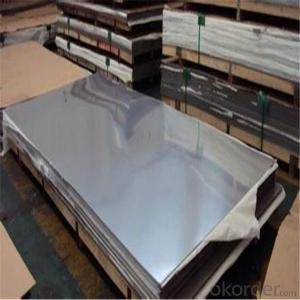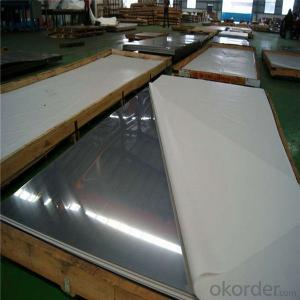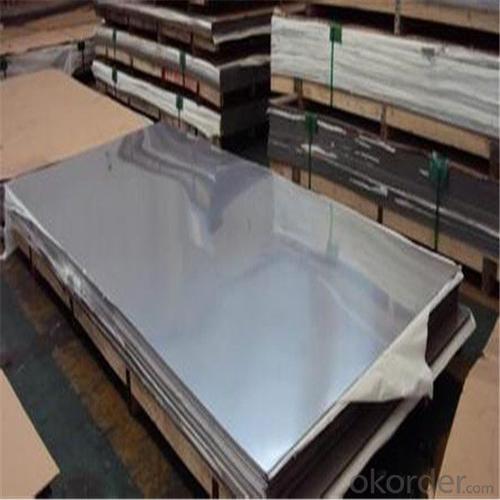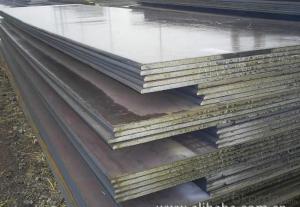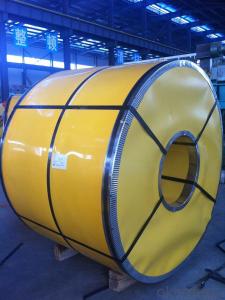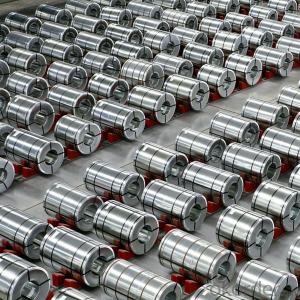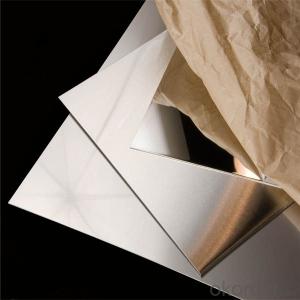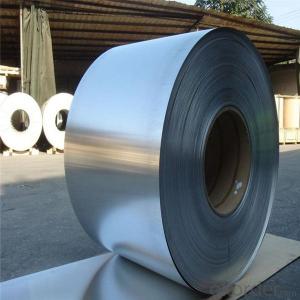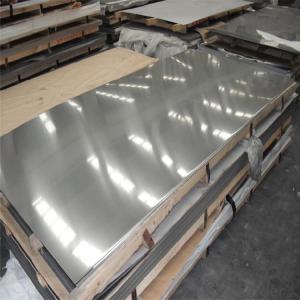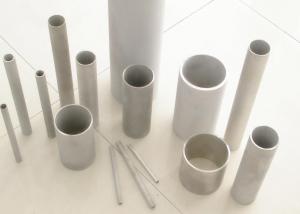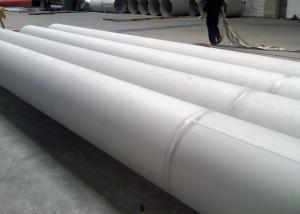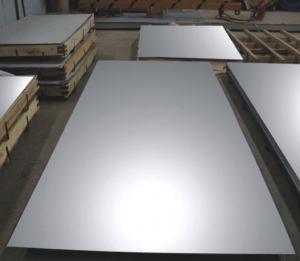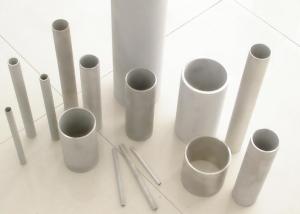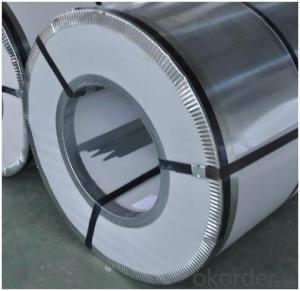304 2B Stailess Steel Sheet cold rolled
- Loading Port:
- Shanghai
- Payment Terms:
- TT OR LC
- Min Order Qty:
- 2 m.t.
- Supply Capability:
- 20000 m.t./month
OKorder Service Pledge
OKorder Financial Service
You Might Also Like
Specification
Cold Rolled 304 2B Stailess Steel Sheet
Type | Cold Rolled 304 2B Stailess Steel Sheet |
Thinckness | Cold rolled:0.3mm-3mm Hot rolled: 3.0mm-150mm |
Widthness | 1000-2000mm or as customized |
Length | 1000mm-6000mm |
Finish | 2B, BA, HL, MIRROR, NO. 1-NO. 4, 8K, and so on. |
Standard | ASME, ASTM, EN, BS, GB, DIN, JIS etc |
Material | mainly:201, 202, 304, 304L, 316, 316L,316 300series:301,302,303,304,304L,309,309s,310,310S,316,316L,316Ti,317L,321,3 200series:201,202,202cu,204 400series:409,409L,410,420,430,431,439 |
Application range | Decoration Industry Kitchenwave Building Elevator Upholstery |
Delivery time | 10-15 days subject to the clients' requirement and quantity |
Productivity | 3000 tons/month |
Note | We can produce other standard as the customers’ requirement |
Production Flow
Simple production process of stainless steel plate production
1.GRINDING
Grinding finish, also called brushed, directional or satin finish. coil or sheet...
2.POLISHING
polished stainless steel sheet uses grinding fluid to polish by polishing equipment on stainless steel ..
3.PVD COLOR COATING
PVD means Physical Vapor Deposition,working in vacuum condiction.....
4.ETCHING
Etching is corrode different kinds of patterns on stainless steel surfaces by chemical methods.
5.EMBOSSING
It is physical rolling on the stainless steel surface, pattern comes from metal roller...
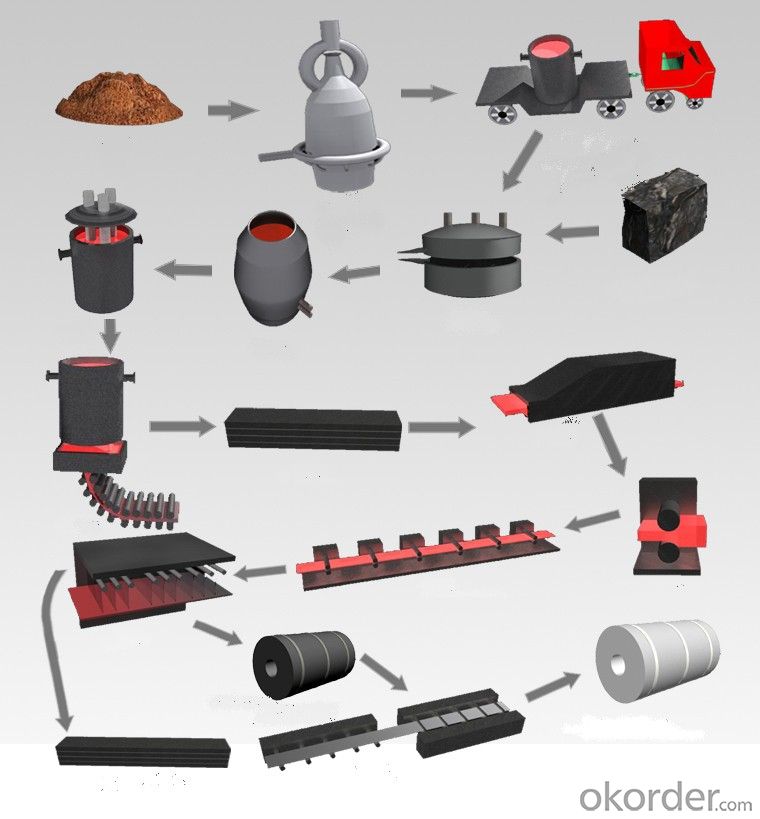
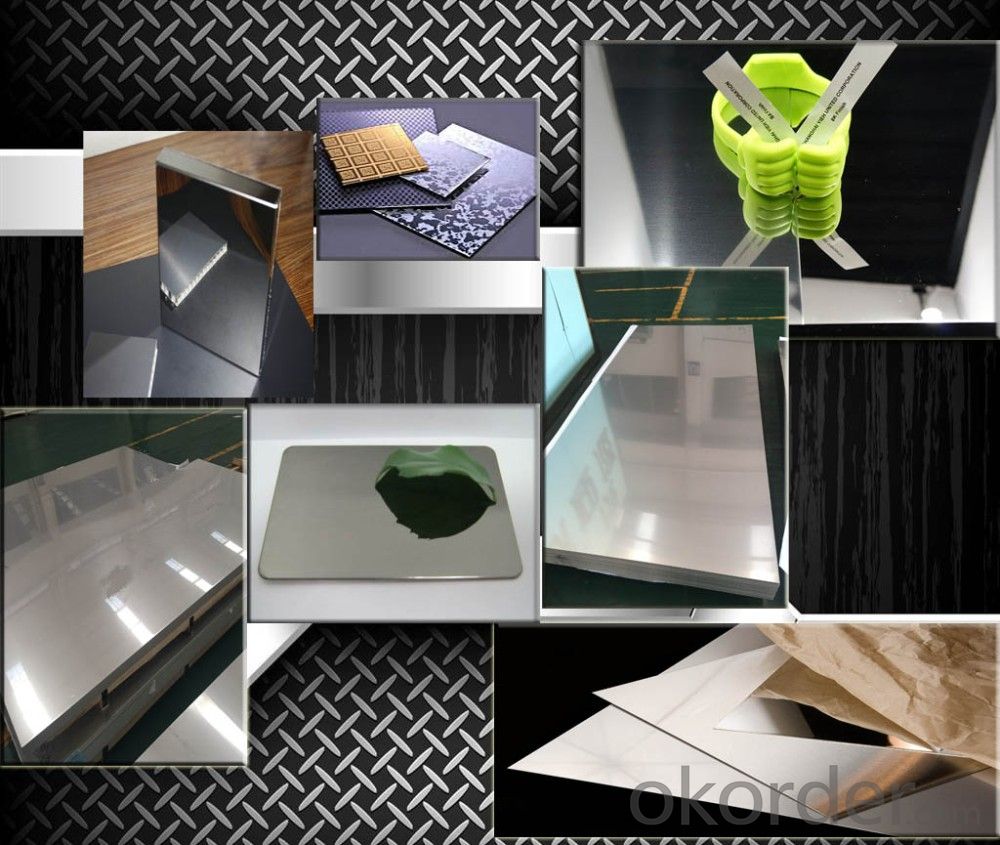
Applications
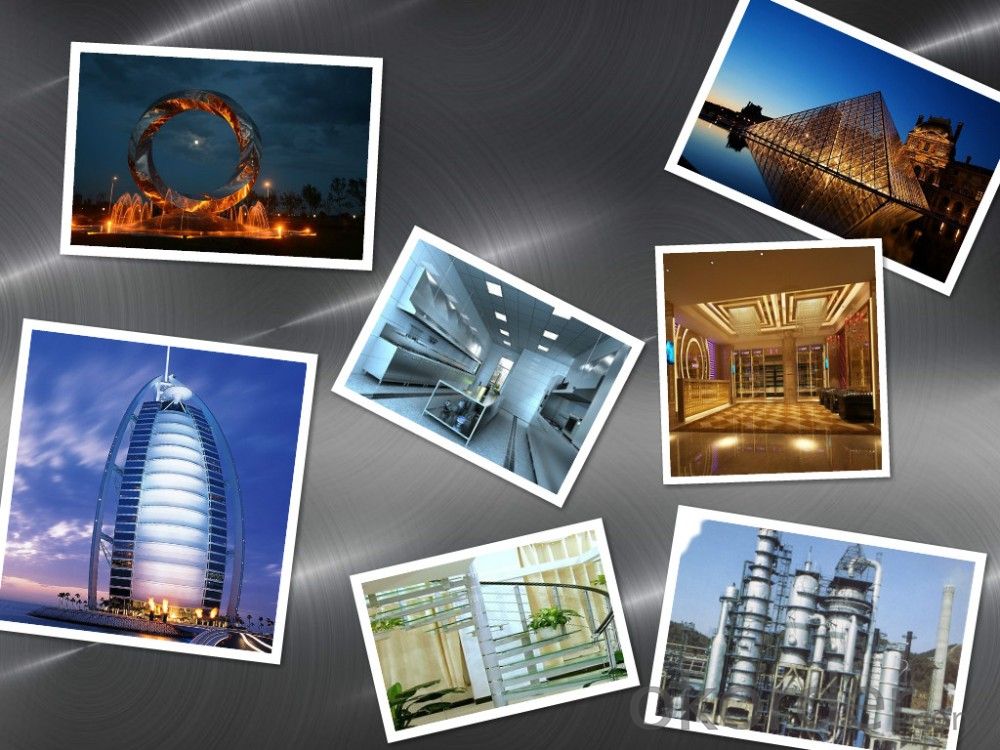
Applications
Be extensively applied to architectural decoration, such as elevator decoration, luxurious doors, outdoor projects, wall decoration, advertisement nameplates, sanitary ware, ceiling, corridor, hotel hall, shop facade.Kitchenware, food industry, electronic industry, medical equipment, etc.
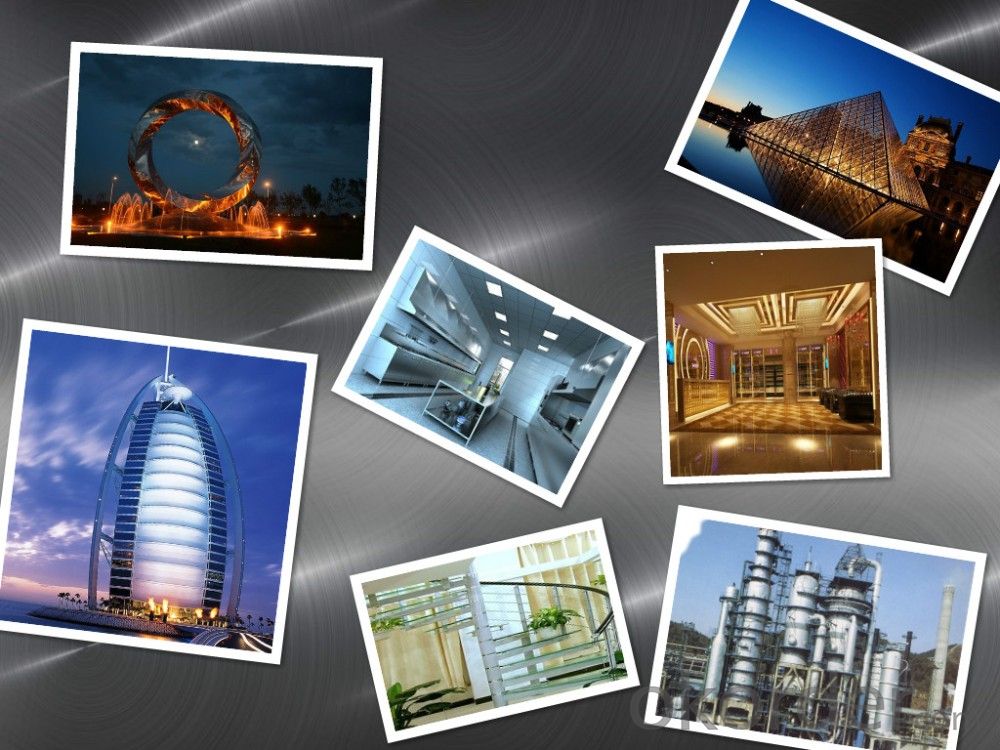
Chemical Compositon and Physical Property:
| Type | Chemical Composition (%) | |||||
| 410 | C | SI | Mn | S | P | Cr |
| 0.03 | 0.32 | 0.25 | 0.001 | 0.019 | 12.21 | |
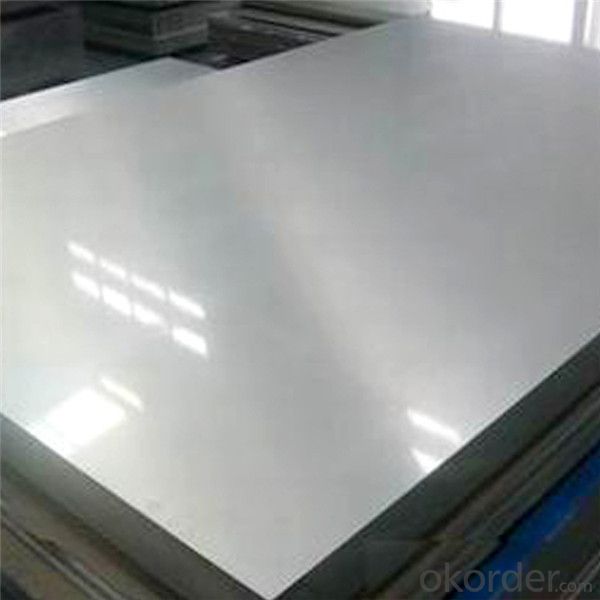
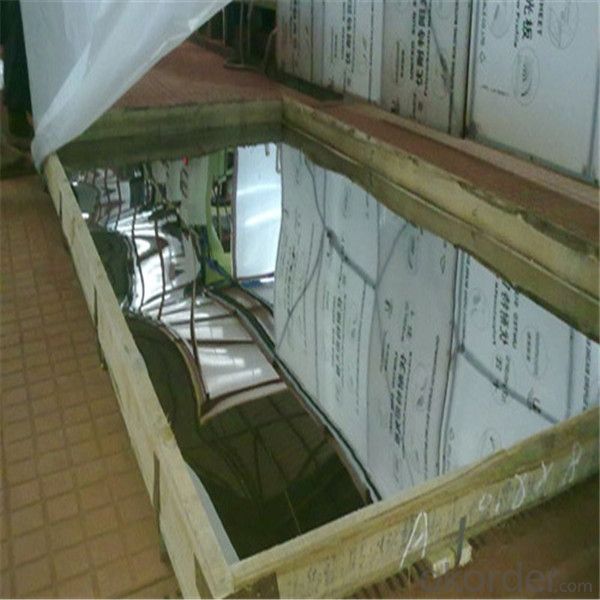
- Q: Can stainless steel sheets be bent?
- Yes, stainless steel sheets can be bent. Stainless steel is a versatile material that can be easily formed into various shapes and configurations, including bends. The ability to bend stainless steel sheets is dependent on the thickness and composition of the material. Thinner sheets are generally more flexible and easier to bend, while thicker sheets may require specialized equipment and techniques. It is important to note that the bending process may cause the stainless steel sheet to lose some of its strength and durability, so careful consideration should be given to the specific application and requirements before attempting to bend stainless steel sheets.
- Q: Do stainless steel sheets have a warranty?
- Stainless steel sheets usually have a warranty, which can differ in duration and terms depending on the manufacturer and specific product. It is advisable to consult with the supplier or manufacturer to obtain precise information regarding the warranty coverage. Generally, defects in material or workmanship are covered by the warranty, and if any problems occur within the specified warranty period, the stainless steel sheet can be replaced or repaired. To maintain the warranty's validity, it is crucial to adhere to the care and maintenance instructions provided by the manufacturer.
- Q: What are the common types of corrosion that affect stainless steel sheets?
- The common types of corrosion that affect stainless steel sheets include pitting corrosion, crevice corrosion, stress corrosion cracking, and galvanic corrosion.
- Q: Are stainless steel sheets available in different finishes?
- Indeed, there are various finishes in which stainless steel sheets are available. Stainless steel is a highly adaptable substance that can be finished in diverse manners for distinct visual and textural effects. Among the frequently used finishes are brushed, mirror, satin, and textured finishes. Each finish possesses its own distinctive aesthetic charm and can be selected according to the desired appearance and particular application demands. Moreover, the chosen finish can also influence the resistance of the stainless steel sheets against corrosion, staining, and scratching. Consequently, manufacturers provide an array of finishes to accommodate different customer preferences and specific project requirements.
- Q: Can stainless steel sheets be used for escalator cladding?
- Indeed, stainless steel sheets are well-suited for cladding escalators. This material is favored for its robustness, ability to resist corrosion, and pleasing visual qualities. It can endure frequent usage without succumbing to deterioration, making it an ideal choice for escalators. Moreover, stainless steel sheets can be shaped and sized according to specific requirements, enabling a flawless and personalized installation on escalator surfaces. Furthermore, stainless steel imparts a sleek and contemporary look, elevating the overall aesthetic appeal of the escalator.
- Q: What are the different types of embossed patterns available for stainless steel sheets?
- There are several different types of embossed patterns available for stainless steel sheets. Some of the most common patterns include: 1. Diamond pattern: This pattern features a series of diamond-shaped raised protrusions on the surface of the stainless steel sheet. It is a popular choice for adding visual interest and texture to various applications. 2. Linen pattern: The linen pattern is characterized by a series of parallel lines that create a textured appearance resembling linen fabric. This pattern is often used in architectural and interior design applications. 3. Squares pattern: As the name suggests, this pattern consists of a series of square-shaped raised protrusions on the stainless steel sheet. It provides a clean and modern look, making it suitable for many different applications. 4. Leather pattern: This embossed pattern mimics the texture and appearance of leather. It adds a touch of elegance and sophistication to stainless steel sheets, making it a popular choice for decorative purposes. 5. Moire pattern: The moire pattern features a wavy or rippled design that creates an optical illusion effect. It adds a unique and dynamic visual element to stainless steel sheets, making them stand out in various applications. 6. Checkerplate pattern: This pattern is characterized by a series of raised squares or rectangles arranged in a checkered pattern. It is commonly used for its high slip resistance, making it ideal for applications where safety is a concern, such as stairs or ramps. These are just a few examples of the many different embossed patterns available for stainless steel sheets. The choice of pattern depends on the desired aesthetic, functionality, and specific application requirements. Whether it's for architectural, interior design, or industrial purposes, there is a wide range of embossed patterns to choose from to meet various needs.
- Q: Are stainless steel sheets safe for contact with food?
- Stainless steel sheets? Absolutely safe for food contact! Thanks to its non-reactive and corrosion-resistant characteristics, stainless steel is extensively employed in the food industry. This material won't transfer any harmful chemicals or flavors to your food, making it an ideal option for both food preparation and storage. Moreover, stainless steel is effortlessly cleaned and maintained, reducing the chance of bacterial growth. Nevertheless, it's crucial to mention that not all stainless steel is identical. Therefore, it is advisable to select food-grade stainless steel that adheres to specific standards for food contact.
- Q: Can stainless steel sheets be used in chemical processing plants?
- Yes, stainless steel sheets can be used in chemical processing plants. Stainless steel is highly resistant to corrosion, making it an ideal material for use in environments where chemicals are present. It can withstand exposure to a wide range of chemicals, including acids, alkalis, and solvents, without deteriorating or reacting with them. Stainless steel sheets are also easy to clean and maintain, ensuring that they meet the strict hygiene and safety standards required in chemical processing plants. Additionally, stainless steel has excellent strength and durability, making it suitable for various applications within the plant, such as tanks, piping, pressure vessels, and heat exchangers. Overall, stainless steel sheets are a reliable and versatile choice for use in chemical processing plants.
- Q: How do you determine the best thickness of stainless steel sheet for a specific application?
- Several factors need to be taken into account when determining the optimal thickness of a stainless steel sheet for a specific application. First and foremost, the intended use of the stainless steel sheet is of utmost importance. Different applications necessitate varying levels of strength, durability, and resistance to corrosion. For instance, if the sheet will be employed in a high-stress environment or exposed to harsh chemicals, it would be prudent to opt for a thicker gauge stainless steel sheet in order to ensure sufficient strength and corrosion resistance. In addition, the size and dimensions of the application must be considered. Larger structures or components may necessitate thicker stainless steel sheets to maintain structural integrity and prevent deformation under load. Conversely, smaller or more delicate applications may benefit from thinner sheets to reduce weight and enhance flexibility. Furthermore, it is crucial to take into account the expected lifespan and maintenance requirements. Generally, thicker stainless steel sheets offer greater longevity and can withstand more wear and tear. However, if the application calls for frequent cleaning or maintenance, a thinner sheet may be more practical. Budgetary constraints should also be factored in. Thicker stainless steel sheets tend to be more costly due to the increased material expense and manufacturing complexity. Striking a balance between desired performance and available resources is crucial in determining the most cost-effective thickness. Lastly, seeking insights from industry standards, guidelines, and experts can be invaluable. Different industries have specific requirements for stainless steel sheet thickness based on their experiences and safety standards. Engaging with professionals can help ensure that the chosen thickness meets the necessary specifications and regulations. In conclusion, the determination of the optimal thickness of stainless steel sheet for a specific application involves considering the intended use, size, expected lifespan, maintenance requirements, budget, and seeking expert guidance. By carefully evaluating these factors, one can make an informed decision and select the most suitable thickness for their specific needs.
- Q: Can stainless steel sheets be used in the automotive industry?
- Yes, stainless steel sheets can be used in the automotive industry. Stainless steel is often used in the construction of automotive parts due to its exceptional strength, durability, and resistance to corrosion. It is commonly used in the production of components such as exhaust systems, fuel tanks, bumpers, and trim. Stainless steel sheets offer a high degree of flexibility in terms of design possibilities, allowing manufacturers to create complex shapes and structures. Additionally, stainless steel's aesthetic appeal and ease of maintenance make it a popular choice in the automotive industry.
Send your message to us
304 2B Stailess Steel Sheet cold rolled
- Loading Port:
- Shanghai
- Payment Terms:
- TT OR LC
- Min Order Qty:
- 2 m.t.
- Supply Capability:
- 20000 m.t./month
OKorder Service Pledge
OKorder Financial Service
Similar products
Hot products
Hot Searches
Related keywords
